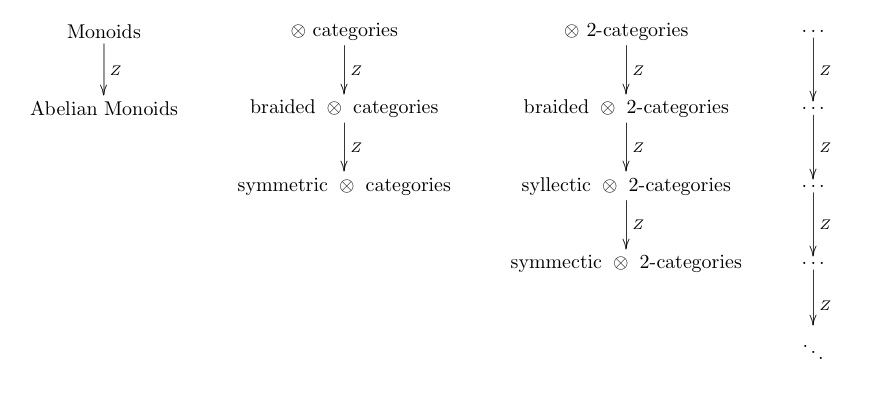One of my amateur interests is paleontology. Paleontologists looking for new examples have two options: go out in the field and dig up a new example, or go looking through drawers of museums to find old examples that had been overlooked. In this blog post I want to give an interesting example of the latter kind of research being useful in mathematics. Namely in discussions with Zhengwei Liu, we realized that an old example of Ocneanu’s gives an answer to a question that was thought to be open.
One of the central problems in fusion categories is to determine to what extent fusion categories can be classified in terms of finite groups and quantum groups (perhaps combined in strange ways) or whether there are exceptional fusion categories which cannot be so classified. My money is on the latter, and in particular I think extended Haagerup gives an exotic fusion category. However, there are a number of examples which seem to involve finite groups, but where we don’t know how to classify them in terms of group theoretic data. For example, the Haagerup fusion category has a 3-fold symmetry and may be built from or
(as suggested by Evans-Gannon). The simplest examples of these kind of “close to group” categories, are called “near-group categories” which have only one non-invertible object and have the fusion rules
for some group of invertible objects . A result of Evans-Gannon (independently proved by Izumi in slightly more generality), says that outside of a reasonably well understood case (where
and the category is described by group theoretic data), we have that
must be a multiple of
. There are the Tambara-Yamagami categories where
, and many examples (E6, examples of Izumi, many examples of Evans-Gannon) where
Here’s the question: Are there examples where n is larger than ?
It turns out the answer is yes! In fact the answer is given by the -graded part of the quantum subgroup
of quantum
from Ocneanu’s tables here. I’ll explain why below.
